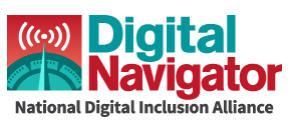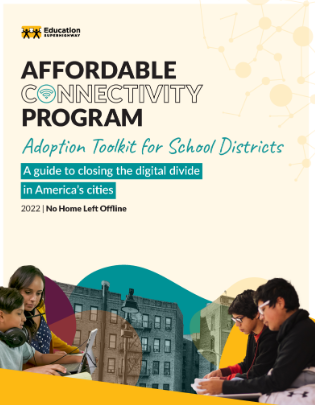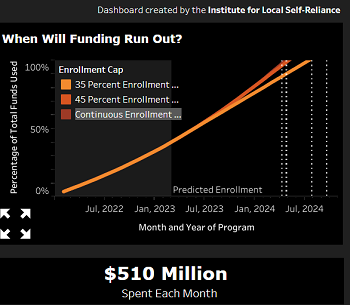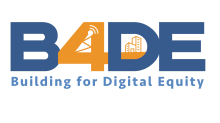
The White House, in coordination with the Federal Communication Commission (FCC) and the U.S. Commerce Department, has kicked off a major push to get more of the estimated 52 million eligible households across the nation to take advantage of the Affordable Connectivity Program (ACP).
Established with the passage of the bipartisan infrastructure law, the ACP provides a $30 monthly subsidy for qualified low-income households to pay for home Internet service, as well as a one-time $100 subsidy to help pay for an Internet-connected device. (Eligible households on Tribal land get a $75/month subsidy).
The FCC recently announced $66 million in grant awards to help states boost ACP enrollment, which has come to be seen as being notoriously complicated among those working in the field.

And on Monday, the White House hosted a webinar with three national nonprofit organizations to announce the launch of an “Online for All” campaign aimed at helping more families enroll with what they called “user-friendly tools” and digital navigator support for community organizations and state governmental entities.
Call to Boost Anemic ACP enrollment
The nationwide push to get more ACP-eligible households enrolled in the program comes because, even a year after the ACP was first established, only “16 million (of 52 million) households are participating. We need to double down on that. We need your help more than ever,” one White House official told digital equity advocates and Internet service providers invited to Monday’s webinar.

The reasons why millions of eligible households are not taking advantage of the benefit are manifold: the tangle of government and corporate paperwork eligible households need to navigate has proven to be confusing and cumbersome; lack of effective marketing has meant many households simply don’t know the benefit exists; and for some, it’s simply a lack of trust in government programs and/or Internet service providers who tried to upsell customers on more expensive plans when the ACP’s predecessor (Emergency Broadband Benefit) was rolled out.
During Monday’s webinar, U.S. Commerce Secretary Gina Raimondo said boosting ACP enrollment “is a top priority for the President because every American needs and deserves access to high quality Internet … What good is the Internet if you can’t access it.”
Secretary Raimondo added that $100/month Internet bills were simply unaffordable, even for most middle class families, and that for low-income households, “really any cost at all is too much.”
We all have to push and activate our networks on behalf of this program. If you see challenges or roadblocks, call us. Call my team and work with states to develop a plan to address affordability.
‘Online for All’ Campaign
The bulk of the 45-minute webinar spotlighted the work of three national nonprofit organizations – Civic Nation, EducationSuperHighway, and the National Digital Inclusion Alliance (NDIA) – who have partnered to launch “Online for All,” a national public education and grassroots outreach campaign specifically focused on boosting ACP enrollment.

Jalakoi Solomon, managing director of Civic Nation’s “Made to Save” initiative, a national public education and grassroots organizing effort to make access to COVID-19 vaccines more equitable for communities of color and build trust in the vaccines among communities who have been hit hardest by the pandemic, gave an overview of the three-pronged strategy that will lead the Online for All campaign.
Solomon, whose organization has led pilot programs to enroll households in ACP in five cities across the nation, said the strategy will first aim to build a coalition of stakeholders in the broadband industry and digital equity space to mobilize enrollment efforts. Then, with the expertise of NDIA and EducationSuperHighway, they will rally to empower community-based and trusted messengers, which will involve training, funding, and sharing of resources.
The third pillar of the strategy will seek to raise awareness through branded marketing as well as provide direct support to ACP eligible households who still do not have a home Internet connection.
EducationSuperHighway CEO Evan Marwell said his organization’s role will be largely to serve “as your free technical assistance provider.” Marwell gave an overview of his organization’s work, which is focused on the “17 million households who could connect to the Internet but can’t afford it.”
He also gave an overview of a variety of apps created by EducatonSuperHighway to make enrolling in ACP much easier. “The apps already have tens of thousands of users,” he said, adding that they hope to be able to integrate them with FCC’s online portal to make ACP enrollment more seamless. Marwell also just joined our Community Broadband Bits podcast for an episode about their tools.
Still, Marwell said, while the online tools can be useful to many, he estimated there was about 10 to 15 percent of ACP eligible households who need in-person support, which is why they created the Learn ACP course, which trains digital navigators to be “certified ACP enrollment specialists.”

Lastly, NDIA Executive Director Angela Siefer spoke to her organization’s willingness to share the vast experience, best practices, and other training resources NDIA has gleaned from “on the ground” digital navigators. A recognized leader in the advocacy and implementation digital inclusion work, Siefer said it is vital to train and place digital navigators in every community, noting specifically that trusted community leaders and organizations are the linchpin in the effort to boost ACP enrollment.
A good example of this is the work that the STEM Alliance is doing in Yonkers, NY with local housing and Department of Social Services officials. You can hear about that in the debut episode of our Building for Digital Equity podcast that featured STEM Alliance President Margaret “Meg” Kaufer. She talks specifically about how they worked with both of those agencies to help enroll families in the ACP beginning at the 16 minute and 20 second mark.
Attention School Superintendents
While it wasn’t the focus of the White House webinar, one area where Education SuperHighway has met with ACP success is worth noting: coordinating with local school districts who have learned that school officials can make ACP enrollment much easier with a simple letter.

In Massachusetts, they partnered with Springfield and Worcester Public Schools on an ACP awareness campaign and to assist families with enrollment. The state average for ACP enrollment is 19 percent of eligible households. But in Springfield they helped boost the adoption rate to 42 percent and in Worcester to 38 percent.
Working with school officials, they engaged in a variety of outreach efforts, which included sending mailers home with a step-by-step enrollment overview; posting information on the school districts websites and social media platforms; text messages; PSAs on local radio and news stations; robocalls; and individualized enrollment letters from the school, which can be used as proof of their Community Eligibility Provision (CEP) status to demonstrate eligibility for ACP.
Getting school districts to provide individualized enrollment letters is key, as it significantly lessens the paperwork burden involved in verifying ACP eligibility.
In a blog post that detailed the partnership, EducationSuperHighway noted: “The success of these initiatives are instructive … schools can serve as a trusted, critical channel in communicating ACP information to families.”
And, to make it easier for other school districts, they created an Adoption Toolkit for School Districts because, as the EducationSuperHighway website notes:
School districts are uniquely positioned to both increase awareness of the ACP and support enrollment by providing the documentation necessary to prove eligibility when a student participates in one of these programs. This documentation is particularly helpful for households who do not wish to prove eligibility via one of the other accepted methods.
Elephant in the Room

While the federal government and the new Online for All initiative is a welcome infusion of support to address the affordability challenge, the webinar avoided the future funding question. The ACP was established with a one-time appropriation of $14.2 billion. But at current enrollment rates, that fund is estimated to be depleted as early as the summer of 2024. And, of course, the fund will be depleted even faster if efforts to enroll more eligible households are successful.
President Biden’s preliminary budget does not seek more revenue for the program, though it’s possible it was not an oversight by the administration but rather a tactical move with the intention to pursue a multi-year reauthorization for the program.
In the meantime, digital inclusion advocates have begun to lobby members of Congress to appropriate more funds for the ACP.
Our new, updated ACP Dashboard now includes a Congressional District map to show enrollment numbers as we hope it can help advocates demonstrate the need for continued funding.
Header image of students using laptop for school work, courtesy of Wikimedia Commons, Attribution-ShareAlike 2.0 Generic (CC BY-SA 2.0)
Inline image of frustrated woman behind laptop courtesy of Flickr user CollegeDegrees360, Attribution-ShareAlike 2.0 Generic (CC BY-SA 2.0)






